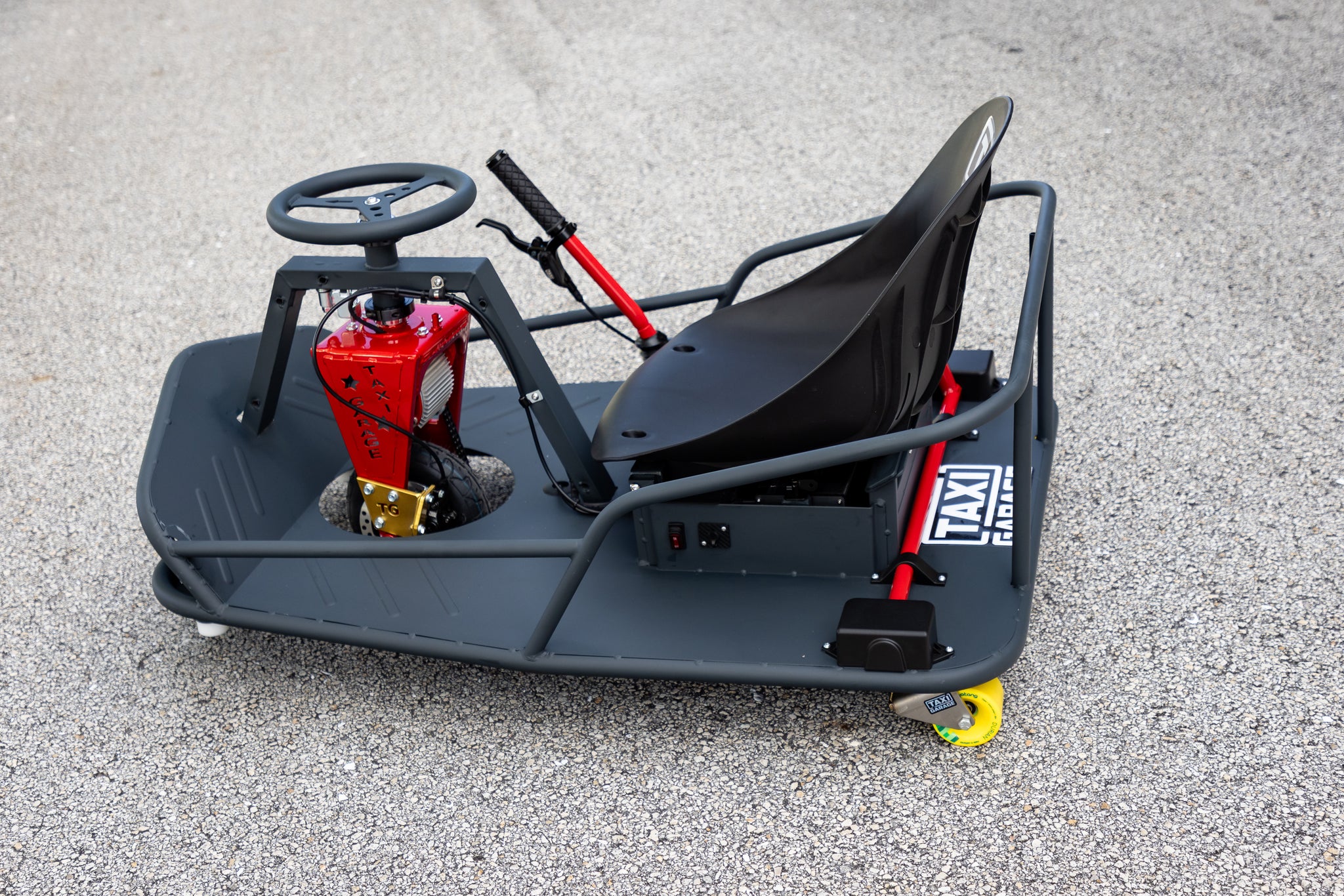
The world of motorsports is vast, but few segments offer the immediate, visceral thrill of drift karts. These specialized machines, distinct from their traditional go-kart cousins, are engineered for one purpose: controlled, sideways sliding. The experience of piloting a drift kart is a unique blend of childlike joy and intense physical concentration, creating an accessible form of motorsport that is captivating a new generation of enthusiasts. Unlike the precision and grip-focused handling of a racing kart, drift karts celebrate the loss of traction, turning every corner into a smoky, screeching spectacle of skill and style.
Engineering the Slide: The Anatomy of a Drift Kart
What fundamentally separates a drift kart from a standard go-kart is its unique construction, specifically designed to break traction with ease. The most critical component is the rear wheels. Instead of high-grip rubber tires, the rear axles are typically fitted with hard plastic sleeves, often made from UHMW or PVC. These low-friction sleeves dramatically reduce grip, allowing the rear end of the kart to slide out predictably and smoothly. The front end, in contrast, usually features one or two standard pneumatic tires that provide the necessary steering and braking control. The chassis is generally low to the ground for a low center of gravity, and the seating position is often reclined. Power plants vary widely, from simple gravity-powered frames meant for hills to electric motor setups and potent gas engines sourced from go-karts or small motorcycles, providing the constant power needed to sustain a drift on flat asphalt.
The Art of Control: Mastering Drift Kart Techniques
Driving a drift kart is an art form that requires a different mindset than conventional karting. The goal is not the fastest line through a corner, but the most stylish and sustained slide. The fundamental technique is counter-steering. As the rider enters a turn and uses weight transfer or a handbrake to initiate a slide, they must immediately turn the front wheels in the direction of the slide. This counter-intuitive action keeps the kart moving forward while sliding sideways. Throttle control is paramount; too much power can result in a spin-out, while too little will bring the drift to an abrupt halt. Body movement is also a key tool. Leaning into a turn or shifting weight to the outside can help initiate and maintain a slide, making the pilot an active part of the kart’s dynamics. Mastering the balance between steering input, throttle modulation, and body English is the key to linking corners together in a seamless, smoky dance.
The Spectrum of Power: From DIY to High-Performance
The drift kart world is beautifully diverse, catering to a wide range of budgets and skill levels. At the most basic level are gravity-powered karts. These are often homemade creations, built from scratch or simple kits, and rely entirely on finding a suitable hill to gain the momentum needed for drifting. This pure form of the sport emphasizes skill and finesse over mechanical power. Gas-powered drift karts represent the classic and most common powered option. The unmistakable rasp of a small two-stroke or four-stroke engine provides the consistent thrust required for extended drifts on flat ground, making them a favorite for parking lot sessions and dedicated tracks. The modern evolution comes in the form of electric drift karts. Utilizing hub motors or chain drives, these karts deliver instant, silent torque, allowing for precise power control and making them ideal for urban environments where noise is a concern.
A Thriving and Accessible Community
A significant part of the appeal of drift karts is their accessibility. The cost of entry is a fraction of that required for car drifting or competitive go-kart racing. This has fostered a vibrant, grassroots community built on a spirit of collaboration and shared passion. Enthusiasts gather in online forums and social media groups to exchange fabrication tips, showcase custom builds, and share videos of their latest drifting exploits. Local meet-ups are common, where pilots of all ages and skill levels come together to test their machines and hone their skills in a social, supportive environment. It is a hobby that bridges generations, allowing teenagers, parents, and even grandparents to connect over the simple, universal thrill of going sideways.
Gearing Up for Safety
The exhilarating nature of drift karts comes with inherent risks. Spills and spin-outs are a natural part of the learning process, making proper safety gear an absolute necessity. A full-face helmet is the most critical piece of equipment, protecting the head and face in the event of a collision or rollover. Sturdy gloves, long-sleeved clothing, long pants, and durable closed-toe shoes are essential for protecting against abrasions from the pavement. For those seeking an added layer of safety, knee and elbow pads are highly recommended. Responsible riding is also crucial; this means operating drift karts in controlled environments like empty parking lots, private tracks, or closed roads, always away from public traffic and pedestrians.
In essence, drift karts have democratized the thrilling sport of drifting. They offer a direct, unfiltered, and immensely fun way to experience the physics of vehicle control and the artistry of a perfect slide. From the simplicity of a gravity-powered build to the high-tech torque of an electric model, the core appeal remains the same: the sheer, unadulterated joy of mastering control within chaos. As this dynamic corner of motorsport continues to evolve, the humble drift kart stands as a testament to the fact that sometimes, the most fun you can have on wheels is when you are pointed in the wrong direction.






